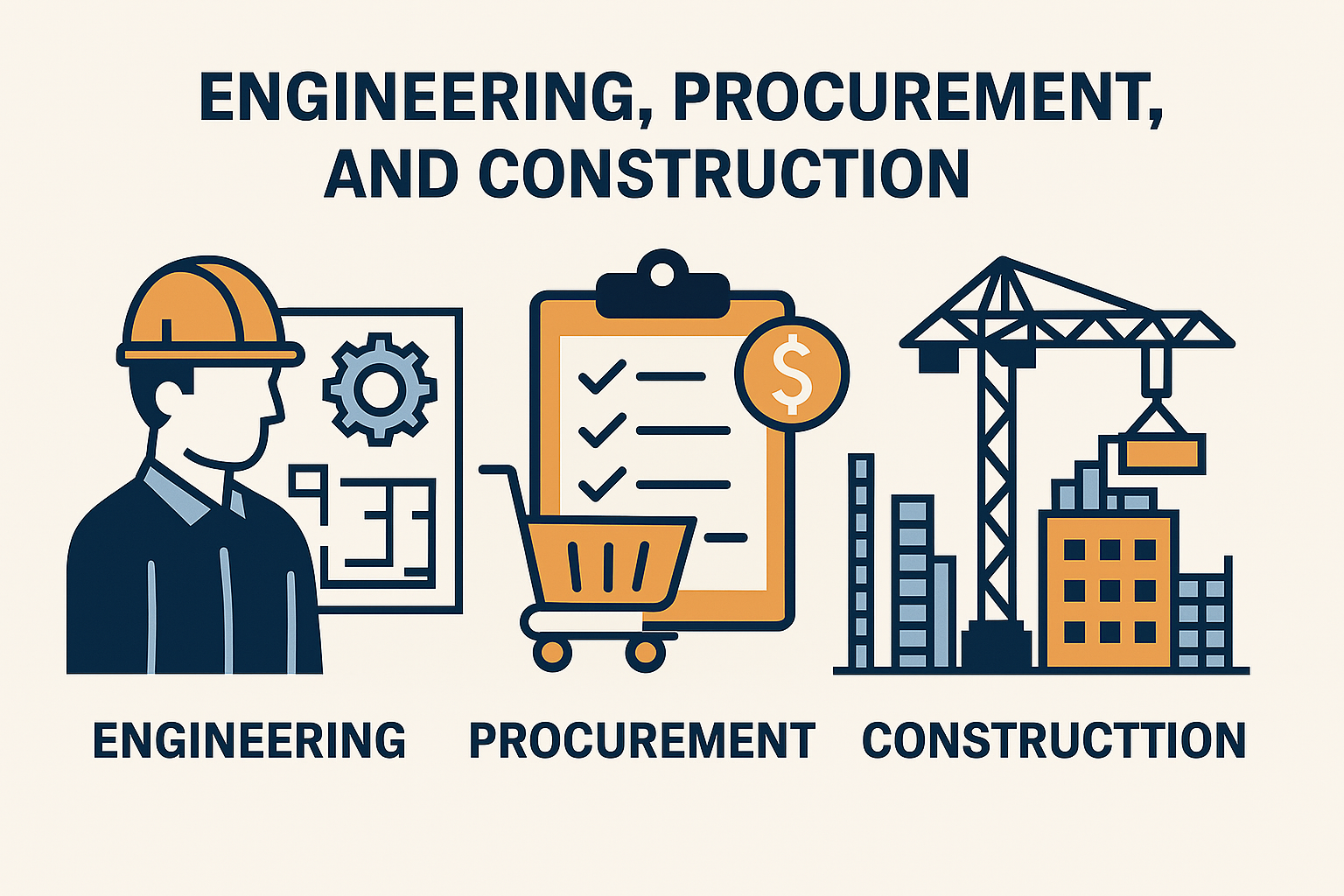Engineering, Procurement, and Construction – commonly known as EPC – is a project delivery model widely used in large-scale infrastructure, oil & gas, power plants, and industrial facilities. In an EPC contract, a single contractor handles all three core phases, streamlining accountability and risk management. Owners benefit from a single point of contact, while contractors gain clarity on scope and deliverables. This model demands rigorous planning, clear communication, and strong collaboration among all stakeholders.
The Engineering, Procurement, and Constructon Phases
Engineering Phase
- Scope definition and feasibility studies
- Detailed design, including civil, structural, mechanical, electrical, and instrumentation drawings
- Simulation and modelling to validate performance targets
The engineering phase sets the technical foundation. It transforms high-level project requirements into precise blueprints and specifications. Errors or omissions here can cascade into costly delays downstream.
Procurement Phase
- Vendor selection and qualification
- Purchase orders for equipment, materials, and services
- Expediting, inspection, and logistics coordination
Procurement secures all the physical inputs needed for construction. Effective procurement optimizes cost, quality, and delivery timelines. It also requires close liaison with suppliers to manage lead times and mitigate supply-chain risks.
Construction Phase
- Site mobilization and temporary works
- Civil works, equipment installation, and piping
- Commissioning, testing, and handover
Construction transforms designs into reality. Integrated project schedules, health and safety plans, and quality control systems steer this phase. At completion, the contractor delivers a fully operational facility to the owner.
Key Benefits of EPC
- Single-point responsibility reduces contractual complexity
- Fixed-price or turnkey delivery caps cost overruns
- Streamlined communication enhances decision-making speed
- Integrated project controls improve schedule adherence
When properly executed, EPC contracts align contractor incentives with owner goals, driving on-time and on-budget delivery.
Common Challenges infront of EPC Contracts
- Scope creep can strain fixed-price budgets
- Technical changes late in the project may trigger disputes
- Supply-chain disruptions ripple through procurement and construction
- Coordination among multidisciplinary teams demands robust governance
Mitigating these risks requires stringent change-management processes and transparent reporting.
Best Practices for EPC Success
- Early contractor involvement Engaging the EPC contractor during front-end engineering design improves constructability and cost estimates.
- Collaborative risk workshops Jointly identifying and allocating risks fosters buy-in and reduces disagreements later.
- Integrated digital platforms Leveraging BIM, construction management software, and real-time dashboards enhances visibility and control.
- Lean construction principles Applying pull planning, modular pre-assembly, and continuous improvement cuts waste and accelerates schedules.
Conclusion
EPC stands out as a holistic project delivery approach that consolidates engineering, procurement, and construction under a single contract. While it offers clear benefits—such as risk transfer, cost certainty, and streamlined governance—it also brings challenges that demand proactive planning, rigorous change management, and strong supplier partnerships. By adopting best practices like early contractor involvement, collaborative risk workshops, and digital integration, organizations can unlock the full potential of EPC and deliver complex projects successfully.
Read Also-
Top 10 Civil Engineering Colleges in the USA – 2025
How to Hire a Structure Engineer in USA? (2025 Guide)
How to Become a Licensed Civil Contractor in USA?
